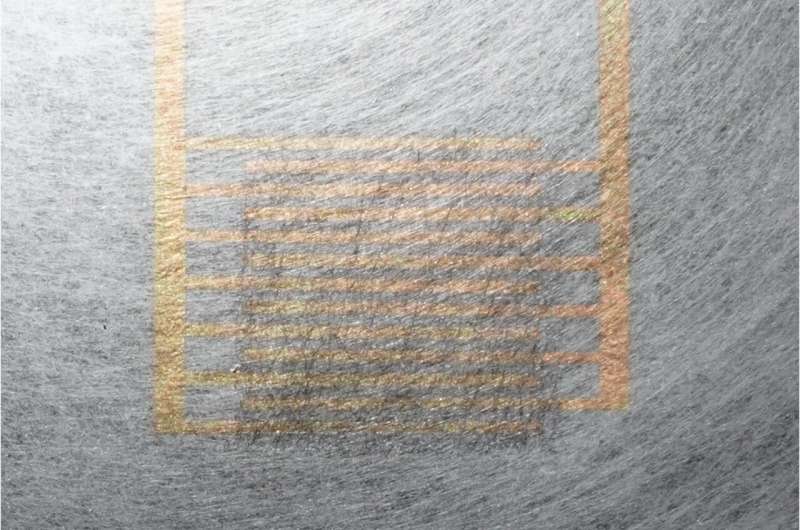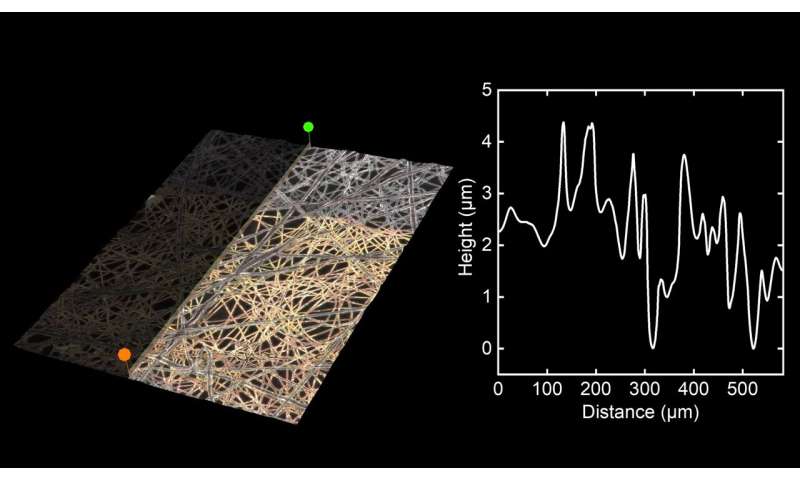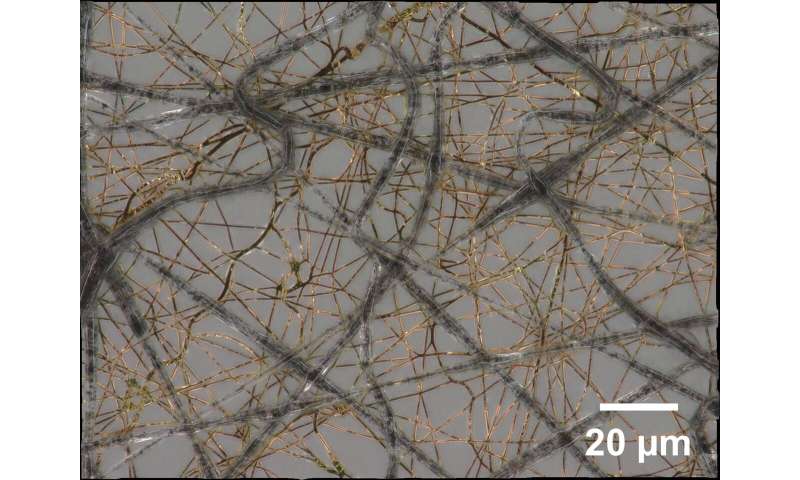
On-skin medical sensors and wearable health devices are important health care tools that must be incredibly flexible and ultrathin so they can move with the human body. In addition, the technology has to withstand bending and stretching, and it needs to be gas-permeable to prevent irritation and discomfort. Another important safety feature of these devices is the required overheat protection circuit. This prevents the devices from overheating and burning the wearer. Any new technology developed for these sensors must meet these needs.
In a recent paper, researchers demonstrated how an important component of the sensors called a thermistor can be constructed using an ultrathin fiber-mesh. Thermistors are a type of resistor whose resistance significantly varies with temperature.
The paper was published online in Advanced Science on September 4.
“An overheat protection circuit is required to avoid burning biological tissues during the operation of flexible devices. One candidate is a polymer positive temperature coefficient (PTC) thermistor, which has a large increase in resistance within a narrow temperature range,” said Chihiro Okutani, an assistant professor in the Department of Electrical and Computer Engineering at Shinshu University in Japan.
“For such thermistors to be applied for on-skin medical sensors, they must be stretchable and bendable down to several hundred micrometers. However, it is still challenging to fabricate a thermistor whose temperature characteristics do not deteriorate when wrapped around a needle with a bending radius of less than 1 mm.”

It is important for this technology to be able to wrap around a needle because sometimes sensors are attached to needles or catheters while in use. In order to achieve this, the thermistor needs to be ultrathin. Researchers used a technique called electrospinning to create the ultrathin mesh-type polymer PTC thermistor. Electrospinning uses electricity to create tiny fibers. The fibers can be made out of different materials, but in this case, researchers used a solution of composite materials.
The newly designed thermistor was then tested to ensure it achieved similar performance capabilities of existing technology. Like typical film-type thermistors, the mesh-type polymer PTC thermistor showed an increase in resistance of three orders of magnitude, an important characteristic for preventing overheating and burns.
By using a mesh structure, the thermistor also achieved transparency, which can help the sensors blend into the skin, and gas-permeability. Gas-permeability is necessary because it prevents irritation and discomfort. “We also demonstrated the operation of the thermistor wrapped around a 280-micrometer needle by fabricating the fibers on a 1.4 micrometer ultrathin film,” said Okutani.
-

Three dimensional measurement of the all-mesh thermistor. Credit: Chihiro Okutani, Shinshu University
-
![Improving wearable medical sensors with ultrathin mesh]()
Magnified Confocal microscope image of the all-mesh thermistor. Credit: Chihiro Okutani, Shinshu University
-

A photograph of the mesh thermistor wrapped around a needle. Credit: Modified from Advanced Science (2022). DOI: 10.1002/advs.202202312
Even with this fiber layer, which serves to give the mesh structure and additional heat sensing, the thermistor remained very thin. This is important because any wearable medical device must be able to withstand bending and when the device is thinner, there is less strain.
Though this thermistor technology is promising, more research will need to be done to make this a reliable alternative to the current thermistor technology on the market. A mesh-type thermistor has a high initial resistance value due to its limited number of conductive paths. The researchers proposed that reducing the spacing between fibers in the mesh or increasing the number of electrodes used could resolve some of these problems, but additional testing will need to be done.
“Our next step is practical applications of the developed thermistors. We believe that the ultraflexible and gas-permeable thermistors can act as overheat prevention components for on-skin or implantable devices, which make flexible sensors safer to operate and more reliable,” said Okutani.
Chihiro Okutani et al, Ultrathin Fiber‐Mesh Polymer Thermistors, Advanced Science (2022). DOI: 10.1002/advs.202202312
Provided by
Shinshu University
Citation:
Improving wearable medical sensors with ultrathin mesh (2022, September 29)
retrieved 29 September 2022
from https://techxplore.com/news/2022-09-wearable-medical-sensors-ultrathin-mesh.html
This document is subject to copyright. Apart from any fair dealing for the purpose of private study or research, no
part may be reproduced without the written permission. The content is provided for information purposes only.
Stay connected with us on social media platform for instant update click here to join our Twitter, & Facebook
We are now on Telegram. Click here to join our channel (@TechiUpdate) and stay updated with the latest Technology headlines.
For all the latest Technology News Click Here
For the latest news and updates, follow us on Google News.

